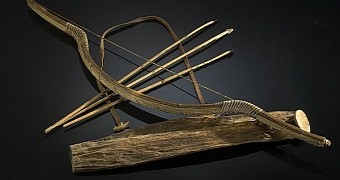We might think that our ancestors were all about hunting mammoths and drawing all sorts of abstract figures on cave walls, but as it turns out, they also very much enjoyed bowhunting, and not just because they were big fans of roast meat.
On the contrary, a new study in the Journal of Archaeological Science argues that, every once in a while, folks who lived during the Neolithic period went bowhunting just to have a chance to socialize and bond with each other. Thus, bowhunting was like a group sport for them.
Specialist Xavier Terradas with the Spanish National Research Council says that this explains why an archaeological site located in Girona, Spain, has until yielded more Neolithic hunting gear than it has bones belonging to ancient wild animals.
"Comparing the scarce remains of wild animals and the abundant hunting gear found in the site, we conclude that nutrition was not the main aim of developing hunting objects.”
“Neolithic archery could have had a significant community and social role, as well as providing social prestige to physical activity and individuals involved in it,” the archaeologist explained in a statement.
Of the pieces of hunting gear to have until now been recovered from the La Draga site in Spain, three are bows estimated to be about 7,400 to 7,200 years old. This means that they are the oldest weapons of their kind ever discovered in Europe.
Apart from being used to kill prey and obtain meat, these bows most likely also served to help establish social cohesion, thus enabling individuals to prove themselves and gain the respect of the other members of the community.

 14 DAY TRIAL //
14 DAY TRIAL //